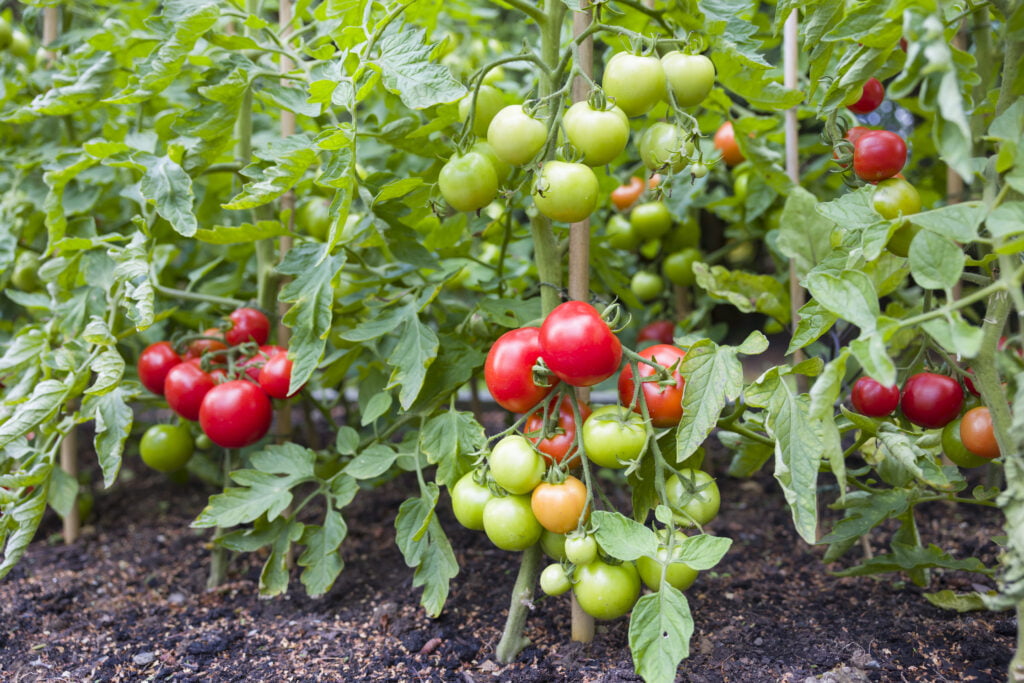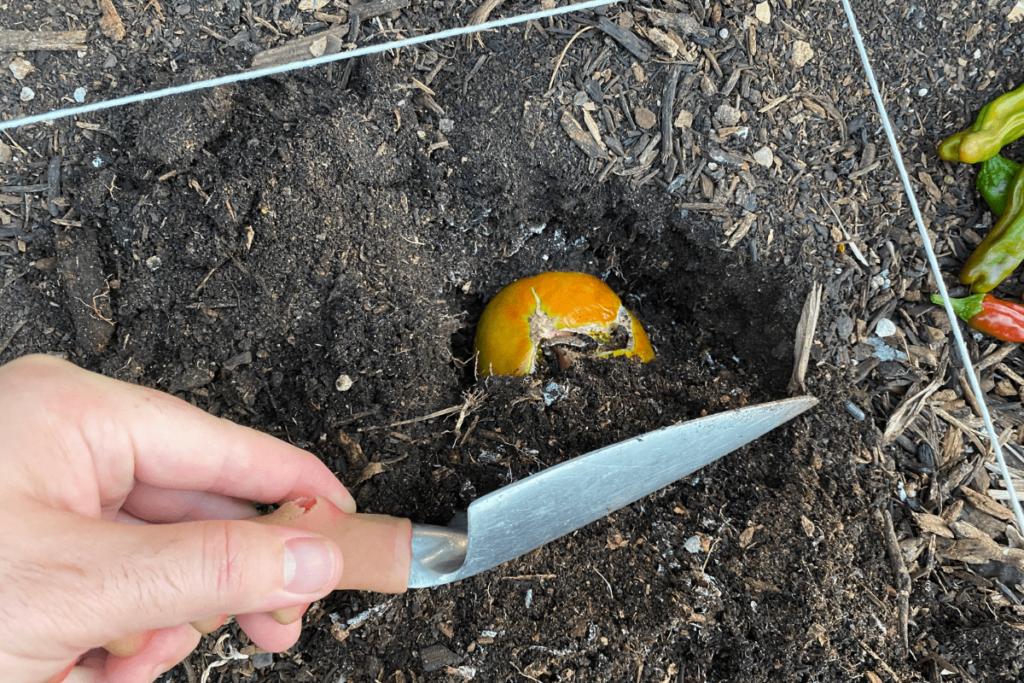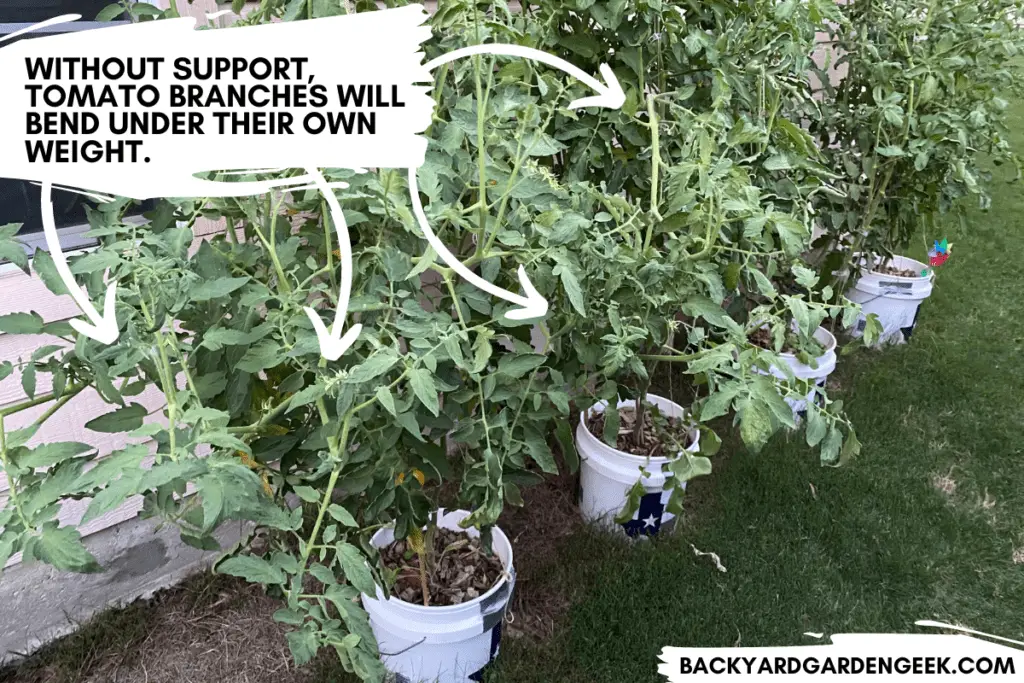In the fascinating world of horticulture, the act of planting a whole tomato raises intriguing questions regarding its potential transformation. Curiosity pervades the mind of the aspiring gardener as they ponder whether the dormant seeds within the tomato will burst forth with life, or if the fruit’s perishable nature will impede any chance of growth. Exploring the outcomes of planting a whole tomato unveils a captivating process that brings to light the remarkable resilience and resourcefulness of the natural world.

The Basics of Planting a Whole Tomato
Selecting a Ripe Tomato
When planting a whole tomato, it is crucial to start with a ripe and healthy tomato. Look for tomatoes that have reached their full color and are soft to the touch but not overly squishy. Avoid tomatoes with blemishes, bruises, or signs of rot. Selecting a ripe tomato ensures that the seeds within it are mature and viable for germination.
Preparing the Tomato for Planting
Before planting a whole tomato, it is essential to prepare the tomato fruit properly. Start by cutting the tomato horizontally, using a clean knife, to expose the seeds. Gently squeeze the tomato to remove excess juice and pulp, taking care not to damage the seeds. This step helps prevent the seeds from rotting or developing fungal diseases during the germination process.
Choosing an Ideal Planting Location
To ensure the success of your whole tomato planting, choosing the right planting location is crucial. Tomatoes require at least six to eight hours of direct sunlight each day, so select a spot in your garden that receives ample sunlight. Additionally, make sure the location has well-draining soil to prevent waterlogging, which can lead to root rot. Consider spacing your tomato plants adequately to allow for proper air circulation, as this reduces the risk of diseases.
Germination and Seedling Stage
Seed Germination Process
The germination process of tomato seeds begins when they are exposed to adequate moisture, oxygen, and warmth. After planting the whole tomato seeds in a seed tray or small pots filled with seed-starting mix, ensure the soil remains consistently moist but not waterlogged. The seeds typically sprout within 5-10 days, with tiny root structures and cotyledons breaking through the soil.
Germination Timeframe
Once planted and provided with appropriate conditions, tomato seeds usually germinate within 5-10 days. However, factors such as temperature, moisture availability, and seed quality can influence the germination timeframe. Seeds sown in warmer temperatures typically germinate faster than those in colder conditions.
Tomato Seedling Development
As the tomato seedlings emerge, they undergo several stages of development. The cotyledons, or seed leaves, initially provide nourishment to the seedlings. True leaves begin to grow, and the seedlings develop an established root system. During this stage, it is crucial to provide the seedlings with adequate care, including appropriate watering, protection from pests, and sufficient sunlight.

Early Growth and Development
Establishing Root System
A strong and healthy root system is essential for the overall growth and development of tomato plants. Adequate watering, deep and infrequent, encourages the roots to grow deeper into the soil, resulting in a well-established root system. Providing sufficient space for the roots to spread and access nutrients is also crucial, making sure to avoid overcrowding tomato plants.
Caring for Tomato Seedlings
During the early growth stage, tomato seedlings require careful attention and care. Regularly monitor moisture levels in the soil and water the plants when the top inch of soil feels dry. Avoid overwatering, as it can lead to root diseases and stunted growth. Additionally, providing a balanced fertilizer specifically formulated for tomato plants can promote healthy growth.
Protection from Pests and Diseases
Tomato seedlings are susceptible to pests and diseases, which can hinder their growth and development. Common pests that attack tomato plants include aphids, whiteflies, and tomato hornworms, while common diseases include damping-off, blight, and leaf spot. Implementing preventative measures such as using organic pest control methods, practicing crop rotation, and ensuring good air circulation can help protect tomato seedlings from these threats.
Transplanting the Tomato Seedling
Determining the Right Time
Once the tomato seedlings have developed several sets of true leaves and the risk of frost has passed, it is time to transplant them into the garden. Transplanting too early can expose the delicate seedlings to colder temperatures and unfavorable conditions. On the other hand, waiting too long can result in overcrowded seedlings, leading to stunted growth. Aim to transplant when the seedlings are around 6-8 inches tall.
Preparing the Planting Site
Before transplanting, prepare the planting site by removing any weeds and loosening the soil. Incorporate organic matter, such as compost or well-rotted manure, into the soil to improve its fertility and drainage. Water the tomato seedlings thoroughly before transplanting to ensure they are well hydrated and minimize transplant shock.
Transplanting Techniques
To transplant the tomato seedlings, dig a hole slightly larger than the root ball, ensuring that the hole is deep enough to accommodate the entire root system. Gently remove the seedling from its container, being careful not to damage the delicate roots. Place the seedling in the hole, backfill with soil, and gently firm the soil around the base of the plant. Water the transplanted seedlings immediately to settle the soil and encourage root development.

Optimal Growing Conditions
Sunlight and Temperature Requirements
Tomatoes thrive in sunny and warm conditions. They require at least six to eight hours of direct sunlight each day to grow and develop properly. Ensure that your tomato plants are not overshadowed by taller plants or structures that may obstruct sunlight. Additionally, maintain a favorable temperature range of 65-85°F (18-29°C) for optimal growth and fruit production.
Soil Requirements and Composition
Tomatoes prefer well-draining soil that is rich in organic matter. Before planting, conduct a soil test to assess nutrient levels and pH. Ideally, the soil pH for tomatoes should be slightly acidic, around 6.0-6.8. Incorporate organic matter such as compost or aged manure to improve soil structure, fertility, and water-holding capacity.
Watering and Fertilization Needs
Consistent and adequate watering is crucial for the healthy growth of tomato plants. Water deeply, ensuring that the soil is moist at least 6-8 inches deep. Avoid overwatering, as it can lead to root diseases and fruit cracking. Regularly monitor the soil moisture levels and adjust watering frequency based on weather conditions.
To provide the necessary nutrients, apply a balanced fertilizer formulated for tomatoes. Generally, a fertilizer with an N-P-K ratio of around 5-10-10 or 10-10-10 is suitable. Follow the manufacturer’s instructions and avoid over-fertilization, as excessive nitrogen can result in lush foliage but limited fruit production.
Caring for the Tomato Plant
Staking and Supporting
As tomato plants grow, they can become top-heavy and require support to prevent them from falling over or breaking. Stake the plants with sturdy stakes or use cages to provide support. Secure the tomato plants to the stakes or cages using soft ties or twine, taking care not to constrict the stems. Proper staking and supporting improve air circulation, prevent diseases, and make harvesting easier.
Pruning and Removing Suckers
Pruning tomato plants can help enhance air circulation, reduce the risk of diseases, and direct the plant’s energy towards fruit production. Remove the suckers, which are the shoots that emerge between the main stem and the leaf axils. Prune suckers when they are small to prevent excessive sap loss and reduce the chances of plant damage.
Managing Weeds and Mulching
Weeds can compete with tomato plants for nutrients, water, and sunlight, hampering their growth. Regularly remove weeds from the vicinity of tomato plants, taking care not to damage the shallow roots. Applying a thick layer of organic mulch around the plants can suppress weed growth, conserve soil moisture, and regulate soil temperature.

Flowering and Fruit Development
Pollination Process
Tomatoes are typically self-pollinating plants, meaning they do not require pollinators to transfer pollen between flowers. The flowers contain both male and female reproductive organs, and pollen is released by the anthers onto the stigma within each flower. Gentle shaking or tapping of the plants can help facilitate the movement of pollen and increase fruit set.
Fruit Set and Development
After successful pollination, fruit set occurs, and the tomato plant begins to develop fruits. The fertilized ovules within the flower develop into tiny green fruits that gradually enlarge. As the fruits mature, they change color, and their final size is determined by the specific variety of tomato. Adequate sunlight, appropriate temperatures, and sufficient pollination are critical for proper fruit set and development.
Factors Affecting Fruit Production
Several factors can impact the fruit production of tomato plants. Insufficient sunlight, extreme temperatures, and inadequate pollination can lead to reduced yields. Additionally, nutrient deficiencies, excessive nitrogen fertilization, and disease or pest infestations can affect fruit production negatively. It is essential to address these factors and provide optimal growing conditions to maximize the harvest.
Harvesting and Using the Tomatoes
Determining Tomato Ripeness
To determine if tomatoes are ripe and ready for harvest, observe their color, texture, and firmness. Depending on the tomato variety, ripe tomatoes can range in color from green to red, orange, yellow, or even black. Gently squeeze the tomato – it should yield slightly but still feel firm. The fruit should also come away from the stem with ease.
Harvesting the Fruits
Carefully harvest tomatoes by gently twisting or cutting the stems with clean pruning shears. Handle the fruits with care to avoid bruising or damaging them. To extend the shelf life, keep the calyx, or the green “cap,” attached to the fruit.
Utilizing Fresh Tomatoes
Fresh tomatoes can be used in a variety of culinary preparations, highlighting their delicious flavor and versatility. Enjoy them raw in salads, sandwiches, or as a simple snack. They can also be cooked into sauces, soups, stews, or used in various main courses. Homegrown tomatoes offer superior taste and nutritional value compared to store-bought alternatives.

Saving Seeds for Future Planting
Extracting and Cleaning Tomato Seeds
To save tomato seeds for future planting, start by selecting fully ripe and healthy tomatoes from the plant. Cut the tomatoes in half horizontally and gently squeeze or scrape out the seeds into a container. Remove any excess pulp and let the seeds sit in the container for a few days to ferment. Afterwards, rinse the seeds thoroughly under running water to remove the remaining pulp and debris.
Drying and Storing Tomato Seeds
Once the tomato seeds are clean, spread them out on a paper towel or a fine mesh screen to dry. Place them in a warm and well-ventilated area, away from direct sunlight. Allow the seeds to dry completely, which usually takes around one to two weeks. Once dried, store the seeds in a cool, dry place in an airtight container or sealed envelope, ensuring they are labeled with the tomato variety and the date of collection.
Maintaining Seed Viability
To maintain the viability of tomato seeds, it is essential to keep them in optimal storage conditions. Store the seeds in a cool and dark place, such as a refrigerator or a root cellar, where the temperature remains consistently between 32-41°F (0-5°C). Additionally, maintain a low humidity level, as excessive moisture can cause the seeds to deteriorate. Check the stored seeds periodically for any signs of mold or pests and discard any damaged seeds.
Conclusion
Planting a whole tomato can be a rewarding experience, allowing you to enjoy the journey from seed to ripe fruit. By following the basic steps outlined in this article, including selecting a ripe tomato, preparing it for planting, and choosing an ideal planting location, you can set a strong foundation for successful tomato cultivation. With proper care throughout the various stages of germination, growth, and fruit development, you can witness your tomato plants thrive and ultimately enjoy the delicious taste of homegrown tomatoes. Additionally, by exploring different tomato varieties and experimenting with various cultivation techniques, you can further enrich your gardening experience and expand your culinary possibilities.



